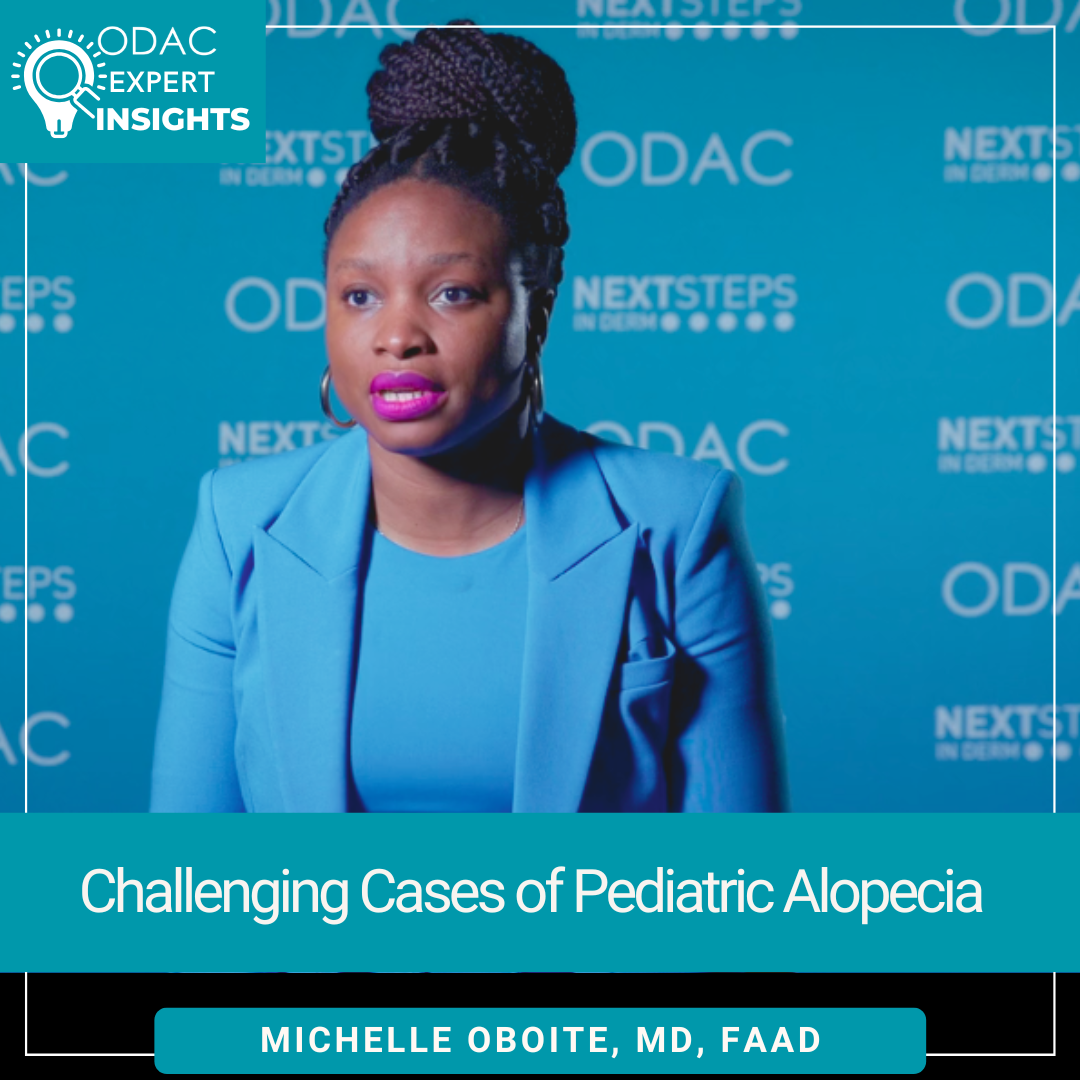Treating alopecia in children requires some unique considerations. Next Steps in Derm, in partnership with the ODAC Dermatology Conference interviewed Dr. Michelle Oboite, assistant professor of clinical dermatology at Penn Medicine and an attending physician with the Children’s Hospital of Philadelphia. Watch as Dr. Oboite shares the unique types of hair loss to consider in children. Learn strategies for pain management with injections. Find out some of the medication side effects to consider when treating children. Plus hear why Dr. Oboite recommends a comprehensive, whole-family approach to pediatric alopecia.
Further Reading
If you want to read more about pediatric alopecia, check out the following articles published in the Journal of Drugs in Dermatology:
Ruxolitinib 1.5% Topical Cream for the Treatment of Pediatric Alopecia Areata
ABSTRACT
Alopecia areata (AA) is a common autoimmune disorder. Although its pathogenesis is not fully understood, AA involves CD8 T cell-mediated destruction of the hair follicle. Several treatment options exist; however, there is minimal evidence in the pediatric population. Currently, there are no curative treatments for AA. The literature suggests that Janus kinase (JAK) inhibitors may be an effective treatment for AA, but evidence in pediatric patients is limited. Here, we report a case of severe pediatric AA treated with topical ruxolitinib, a JAK inhibitor.
Treatment of Alopecia in Children
ABSTRACT
Alopecia or hair loss in children is an important and often challenging problem to diagnose and treat. Early diagnosis and treatment is the key because hair loss in children has a significant physical as well as psychological impact on their development. Alopecia in children are mainly non-scarring, but cicatricial alopecia can also be seen. The diagnosis can usually be made by direct examination of the scalp. Potassium hydroxide (KOH) examination of plucked hair and scalp scrapings, woods lamp examination and trichoscopy are useful diagnostic aids. When a cicatricial alopecia is suspected, scalp biopsy is recommended. Disease specific treatment should be initiated early and adequate counselling provided to both the patient and their parents. This review focuses on the treatment options available for various types of alopecia in children and their safety and efficacy data, analyzing the available literature evidences.
Did you enjoy this video interview? Find more here.

